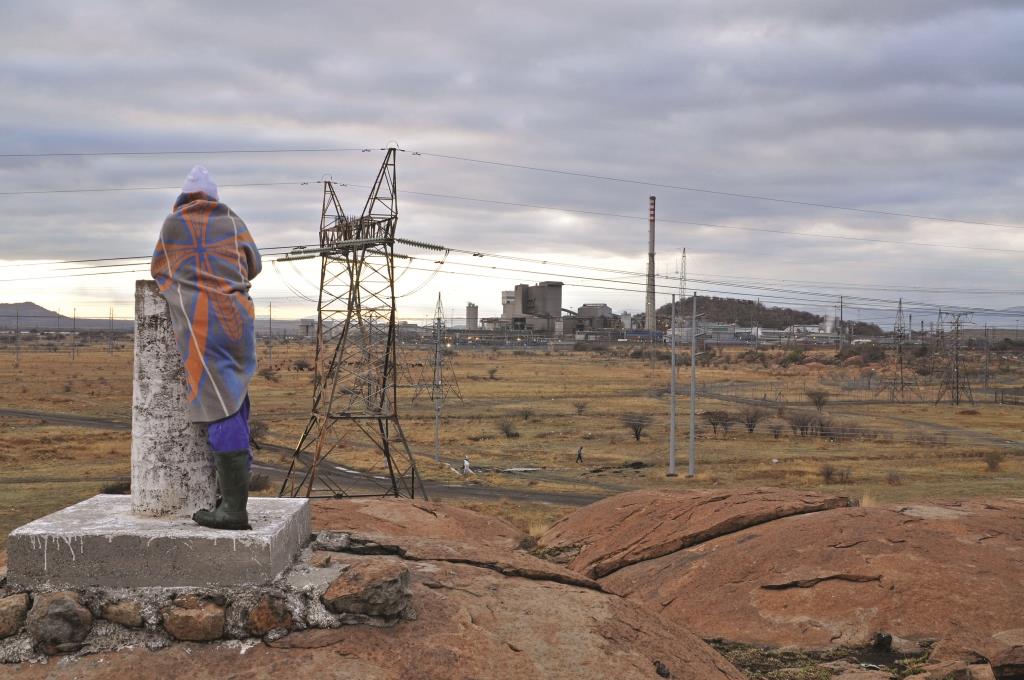It has been another wounding month for Africa’s biggest mining industry that it is likely to take years to recover from, despite efforts by unions and mine owners to heal the rift.
Tens of thousands of mine workers spent the month marching and protesting in wildcat strikes, across South Africa, for more pay. There were so many, it was difficult to keep track.

CARLETONVILLE, SOUTH AFRICA ñ SEPTEMBER 11: Disgruntled mine workers gather to be addressed by expelled ANC Youth League President Julius Malema at Gold Fields Mine on September 11, 2012 in Carletonville, South Africa. The South African Defence Force has been put on high alert following Malemaís visits to various mines in the country. (Photo by Gallo Images / Sowetan / Antonio Muchave)
Fifteen thousand workers were on strike at Gold Fields, stopping production at KDC Mine, in Carletonville 79km west of Johannesburg; hundreds of workers downed tools at ferrochrome miner Samancor; thousands went on strike at AngloGold Ashanti’s operations, 80% of Anglo Platinum’s workforce stayed away and at Aquarius Platinum a mob of 200 illegal strikers forced their way into the mine and threw petrol bombs.
On October 8, the head of Aquarius, the ebullient Stuart Murray, became the third platinum CEO to resign this year.
At least three people died in October in South Africa’s mines and 20 were injured. Police, soldiers and union leaders struggled to keep control amid the tension of nearly three months of wildcat stoppages that would have been unthinkable five years ago when the mines were booming.
Economists talked of the danger of drifting into recession as the losses piled up. By the second week of October, Gold Fields had lost at least 35,000oz of gold from its KDC Mine, while Angloplats, the world’s largest platinum producer, had lost 67,000oz and revenue estimated at R1.1 billion ($125.8 million).
Mines have been closing shafts, cutting costs and firing staff as the losses have grown. Twelve thousand workers lost their jobs at AngloPlats on October 8; at Gold One—where a strike began on October 1—1,435 of 1,900 employees were fired at its Ezulwini Operation and at Bokoni Mine, in Limpopo, 2,000 workers lost their jobs.
More shafts are likely to close in the next few months, at the cost of even more jobs, according to mining analyst at Cadiz Corporate Solutions, Peter Major.
“In August, when the platinum price was down to 1,400 [dollars], half of the mines in South Africa were losing money. The price may have gone up, but now they have to cope with an unstable workforce. The price is only good if your mine is working and I can see more mining companies closing shafts to try to survive,” says Major.
“I was in a telephone conference with Indian investors this week and they were saying they are avoiding all of the mining and resources stocks here. They only wanted to talk about finance and industrial stocks. It was the worse phone call we have had for years.”
Christo Fourie, the CEO of PCC, South Africa’s biggest quantity surveyors and consultants to mining capital projects, agrees that there is likely to be long-term uncertainty in the industry.
“A lot of people are concerned right now. We have had a lot of projects put on hold or cancelled,” he says.
While the mining industry fretted over its future, the custodians of its once robust wage negotiations tried to put the wildcat strike genie back into the bottle.
Unions and mining companies met at the Chamber of Mines in Johannesburg to agree upon new pay scales for the gold mining industry. They include: doing away with Category 3, as an entry level and adjusting all newcomers’ pay up to Category 4; an allowance for rock drill operators; a new category for locomotive, loader, winch and water jet operators and adjustments to pay to preserve the integrity of the current job grading framework.
“It is critical that all the parties show leadership in restoring stability to the mining industry and bringing an end to the unprotected industrial action that is besetting the industry,” says Elize Strydom, the chief negotiator for the Chamber of Mines.

CARLETONVILLE, SOUTH AFRICA ñ SEPTEMBER 13: Gold miners gather at Gold Fields KDC West Mine under the watch of police members on September 13, 2012 in Carletonville, South Africa. Miners have embarked on an illegal strike to air their labour grievances and their unhappiness with the leadership of the National Union of Mineworkers. (Photo by Gallo Images / Dino Lloyd)
The long-term aim is to bring platinum, which has always settled its own pay deals, into the collective bargaining talks in which unions, representing 300,000 gold and coal workers, strike a pay deal every two years with the mining companies through the Chamber of Mines. It is a process that promises certainty and parity for the workers and a chance to plan for costs for the next two years. Wages make up 50% of mining costs.
The next wage talks are set for June, but talks will have to begin sooner rather than later if they are to bring platinum into the fold. Even then, there are few certainties to comfort the mine owners in the face of an open revolt against low pay.
“Wage talks are not going to do much good, these disputes are all about politics,” says one official from the National Union of Mineworkers.
There are wild whispers doing the rounds that this is an orchestrated grassroots campaign to bring the mines of South Africa to their knees to usher in nationalization, a radical course of action that has all but been abandoned by the government. Concrete evidence of this is unclear; what is clear is that it is likely to be a bleak Christmas in Africa’s largest mining industry.
